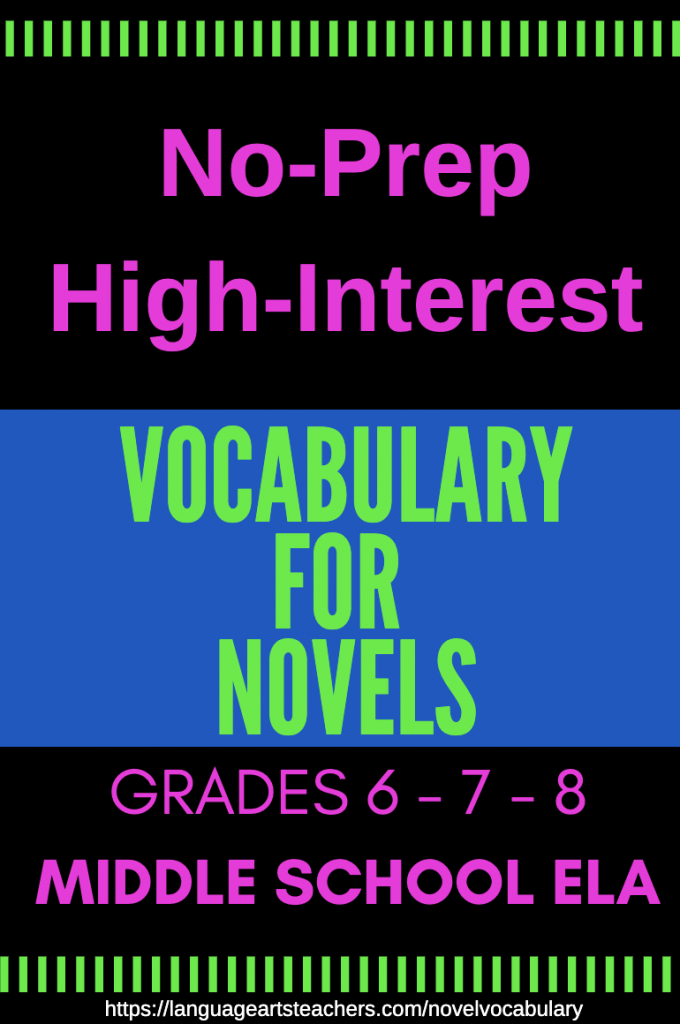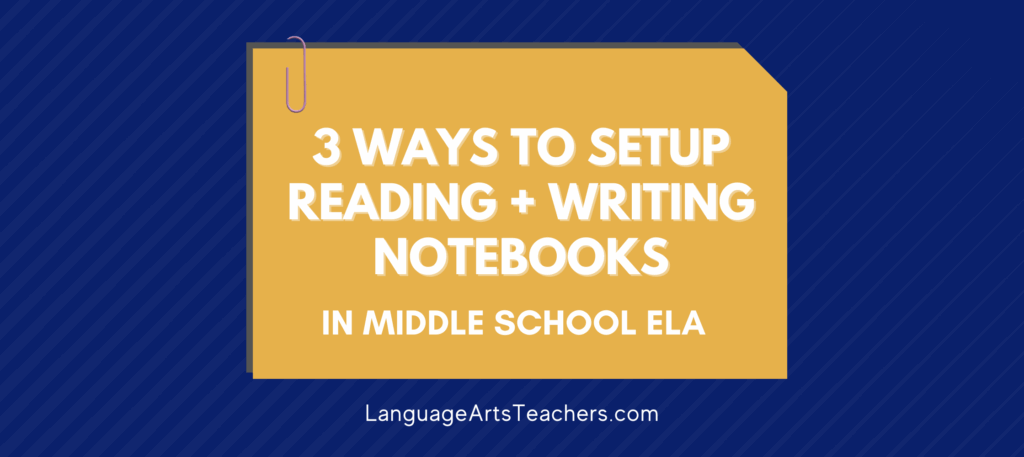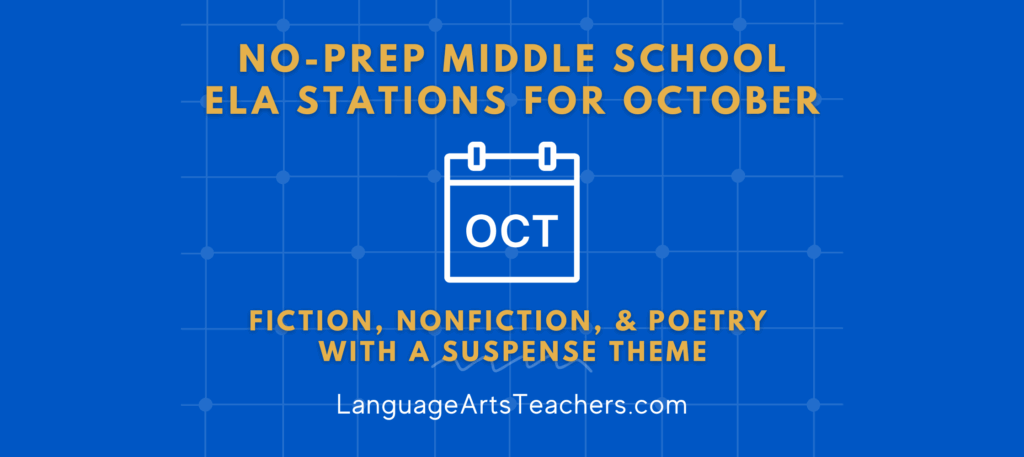No-Prep + High Engagement

→ Instead of random chapter-by-chapter vocabulary lists . . .
→ Instead of looking up definitions and still not understanding . . .
→ Instead of the passive learning that comes from meaningless memorization . . .
💡What if students had simple steps to take that would put them in control of their vocabulary learning experiences while also helping you as the teacher remove a bit of the workload from your plate?
Here’s how to do that for ANY novel:
(1) Teach students what it means to “skim” (show them that it’s not nearly the same as actual reading). Let them skim the chapter to visually identify words they’ve never seen before or that they’re not sure about. In other words, THEY give you the word list rather than the other way around. One thing that helps is to have students start at the end of the chapter and work backwards (hard to read backwards—the goal isn’t to be reading—it’s to skim for unfamiliar words).
(2) Set a timer. Let them do this almost like a game where some of your students start at the end of the chapter and work their way toward the beginning while others start at the beginning and work their way to the end. Maybe just five minutes is all they get.
(3) As a group, talk about some of the words. Have a nice little conversation about the developing list. You’ll have students recognize words that others have listed and they’ll want to talk about them! They typically love to share what they know and besides, the ones doing the talking are also the ones solidifying the learning.
(4) If you end up with a quite lengthy list, don’t try to make the whole thing your “official” list. Instead, let students individually choose maybe five words for their own word list. The goal is that when they come across the words they chose, then are they able to “get the gist” or meaning based on the context?
(5) Students can keep their own notes by jotting down which words they chose, along with the “gist” of each one as they come across it in the book while reading.
(7) Challenge them to use any one of their own words in a sentence when they ask or answer a discussion question. Even if they don’t quite use the word correctly (like if they need to add –ly or change the verb tense, etc.) it’s ok… That then becomes a quick teaching moment.
✅ The assessment in this case would be very informal. It’s a matter of if they chose words, if they are keeping track of them, and if they are using them when they ask, answer, or otherwise respond during discussion time.
Will you have some students who insist that they know every single word in the chapter and don’t need to do this? Possibly. In that case, put them in charge of a dictionary so they can quickly look up actual definitions if the “gist” isn’t clear as you read / discuss.
This method allows for students to feel a sense of ownership because they get to choose words they want to focus on for each chapter.
It also lightens your own workload because you don’t have to spend time guessing which words to include or exclude from the list.
Plus, there will be students who may not know any of the words at all and feel like they need to have a list of all 25 should that many make it onto the list. That’s so overwhelming, and it’s a great opportunity to teach them that none of us knows everything all at once. It’s ok to not know it all. Just pick a few and focus on those.
Part of the discussion of the book going forward can be vocabulary-focused in that students can share how a word was used, why they think the author described something in a certain way, how we as readers can imagine the scene or situation in our minds.
This makes the book discussion rich in both vocabulary and comprehension with conversations that not only support the practice and authentic experimentation of new terms, but that also connect right into the literal and figurative meaning of the book.



